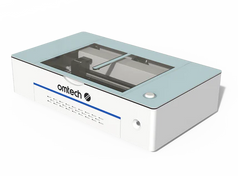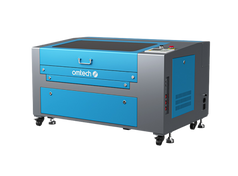Best Wood for Laser Engraving: The Ultimate Guide to Choosing the Best Wood
Whether you are delving into laser engraving as a hobbyist or utilizing it as a source of income, owning a laser machine in this era is undeniably thrilling. Laser engravers serve as potent tools that can transform wood into a myriad of creations, ranging from home decor and jewelry to signs, cutting boards, and furniture. With wood's innate beauty and vast array of variations, it emerges as an ideal material for your next laser engraving endeavor.
Determining the best wood for laser engraving can be a nuanced process, as the optimal choice hinges on the specific requirements of your project. There is no universal selection when it comes to choosing the ideal wood for laser engraving and cutting, given the multitude of wood types available, each with its unique characteristics and suitability for different applications.
This comprehensive guide aims to shed light on various wood types well-suited for laser engraving, highlighting their distinctions and assisting you in pinpointing the perfect match for your creative ventures. Let's embark on this exploration together to uncover the wonders of wood and laser engraving.

Common Types of Wood for Laser Engraving
Navigating the vast landscape of wood species can indeed be daunting when selecting the ideal material for a particular project. However, certain popular options serve as excellent starting points in your quest for the best wood for laser engraving:
Alder: Renowned for its popularity in laser engraving, alder wood stands as a light-colored hardwood with subtle streaking. The pliable nature and coloration of alder wood facilitate the creation of dark etchings by laser beams, resulting in designs characterized by high contrast.
Poplar: Similar to alder, poplar wood, a hardwood, can be swiftly cut at a low power level. Its uniform wood grain lends itself to more even etching, making it a breeze to engrave intricate designs.
Cherry: Despite its elevated streaking and reddish-brown hue with high resin content, cherry wood, a hardwood, remains a favorite among laser enthusiasts. The beauty of engraved cherry wood and its user-friendly nature make it a popular choice for furniture and cabinets.
Maple: A hardwood with light coloring, maple wood yields a dark burn, making it more challenging to work with than softwoods. However, its capacity for intricate details and exquisite finishes renders it a preferred choice for laser engraving photos.
Pine: Derived from pine trees, pine wood, a softwood, boasts a light color, straight grain, and affordability.
Cedar: A type of softwood encompassing various tree species within the Cedrus genus, cedar is renowned for its distinctive aroma, durability, and resistance to decay.
Plywood: Not all plywood is created equal, as quality plywood comprises layers of birch veneer pressed together with adhesive. Ideal for beginners due to its workability and reliability, plywood serves as a versatile option for laser cutting projects.

Softwood VS. Hardwood
In the realm of wood, two primary categories—softwood and hardwood—dominate the landscape, each distinguished by unique characteristics:
-
Cell Structure:
- Hardwood: Characterized by visible pores or vessels for water and nutrient transport, resulting in a varied appearance under a microscope.
- Softwood: Lacks visible pores, with water transported through vertical tracheids and radial rays devoid of visible pores.
-
Strength and Density:
- Hardwood: Typically stronger and denser due to slower growth and complex cellular structure, translating to enhanced strength and durability.
- Softwood: Generally less dense with a simpler cellular structure, leading to lower strength compared to hardwoods.
-
Appearance:
- Hardwood: Exhibits a prominent grain pattern owing to visible pores and tends to feature darker hues.
- Softwood: Showcases a softer, less pronounced grain pattern and is often lighter in color.
-
Usage and Applications:
- Hardwood: Preferred for high-quality furniture, flooring, cabinetry, and decorative items due to strength, durability, and aesthetic appeal.
- Softwood: Widely employed in construction, outdoor projects, paper production, and structural lumber owing to its abundance and ease of processing.

Advantages of Choosing Hardwood for Laser Engraving
- High-quality and luxurious engravings: Hardwood's intricate and dense grain patterns lend themselves well to laser engraving, offering striking contrast and depth in designs. The natural variations in texture and color enhance visual appeal, resulting in sophisticated and opulent engravings.
- Durable and resistant to damage: Renowned for their durability, hardwoods like walnut, cherry, oak, and maple resist scratches, dings, and abrasion, preserving their pristine appearance over time.
- Versatile options for different projects: Hardwood presents a diverse array of options for laser engraving projects, courtesy of the multitude of species and finishes available. Whether for personalized gifts, decorative signage, custom furniture, or artistic endeavors, there exists a hardwood to cater to any aesthetic and functional requirement.
Advantages of Choosing Softwood for Laser Engraving
- Option for large-scale projects: Softwood, typically more cost-effective than hardwood, serves as a budget-friendly choice for large-scale laser engraving projects, ideal for individuals and businesses operating within budget constraints.
- Reduced wear on tools: The softer nature of softwood translates to less wear and tear on laser engraving tools, prolonging their longevity and reducing the need for frequent maintenance and replacements.
- Faster cutting and engraving speeds: Softwood's lower density and simpler cellular structure enable laser engraving machines to operate at faster speeds compared to hardwood, resulting in expedited project completion times.
Learn more: Should You Stain Wood before or after Laser Engraving
How To Choose the Best Wood for Laser Engraving

After familiarizing yourself with the distinctions among various wood types, it becomes paramount to consider the attributes required for your specific handicraft:
- Check the Resin Content and Understand How It Impacts Outcome: The resin content of a wood species significantly influences the end product. Higher resin content results in a dark etch with high contrast, particularly on lighter-colored woods, while lower resin content is suitable for applications requiring a more subtle effect with lighter contrast.
- Be Aware of Different Wood Properties: Apart from resin content, other wood properties—such as moisture level, knots and rings, and harvest season—should be taken into account when selecting a wood type for your project.
- Choose Lighter Wood Instead of Darker Wood: Lighter-colored woods offer a darker, more vivid contrast when etched, whereas darker woods, even those with high resin content, tend to produce images that appear less defined and conspicuous.
- Minimize Using Wood With Streaking When Possible: Heavy streaking in wood grain can obscure designs and make etching challenging, particularly for intricate patterns or photographs.
- Be Mindful of How Thick the Wood Piece Is: The thickness of a wood piece, alongside resin content and wood density, directly impacts engraving settings. Opting for an appropriate thickness minimizes the need for multiple passes and ensures precise, clean etching.
Learn more: How To Clean Wood After Laser Engraving?
Invest in a High-Quality Laser Engraving Machine for Your Craft

For your laser engraving endeavors, investing in a high-quality laser engraving machine is paramount. OMTech's range of CO2 laser machines caters to users of all experience levels and project applications, offering a diverse selection to suit various needs—from home hobbies to commercial ventures.
Embark on your laser engraving journey with OMTech's premium laser engravers and cutters, and witness the transformative power of precision and creativity in your craft. Explore our extensive product line today and discover how OMTech can elevate your laser engraving experience to new heights!





















